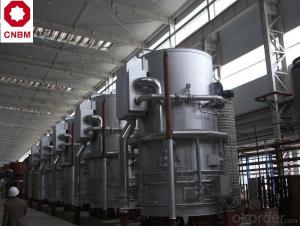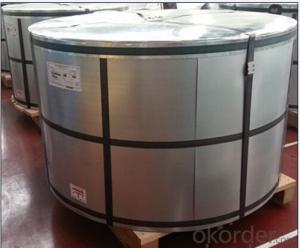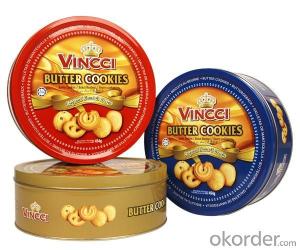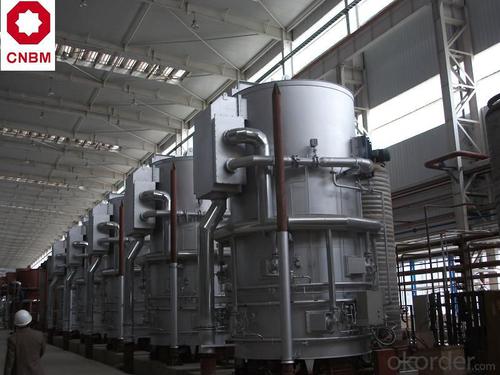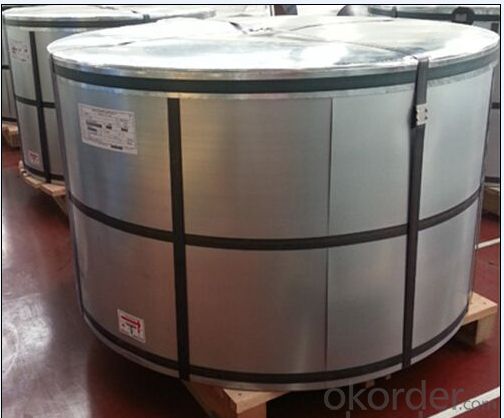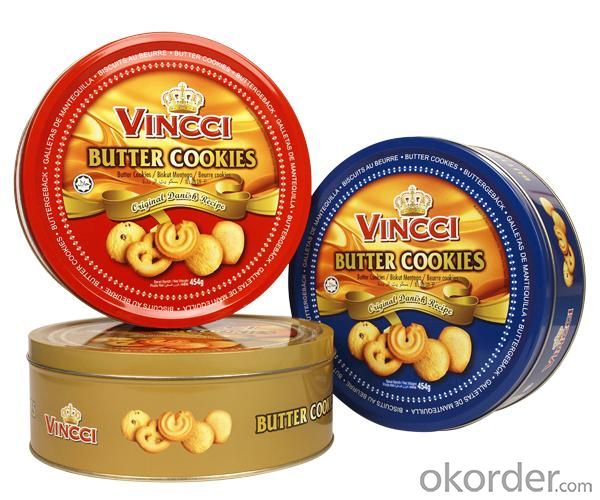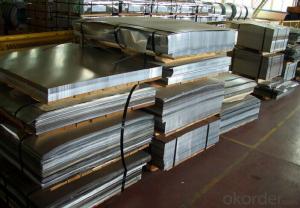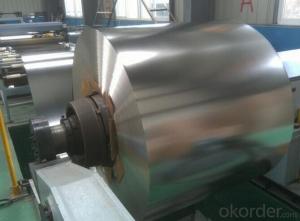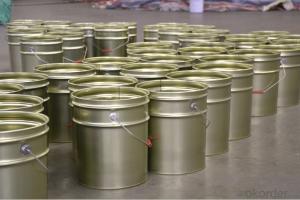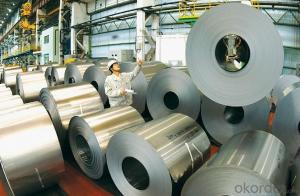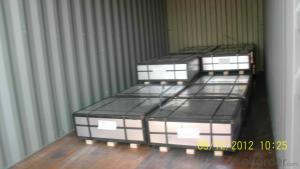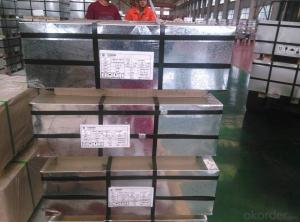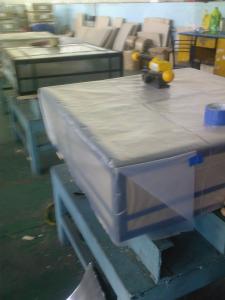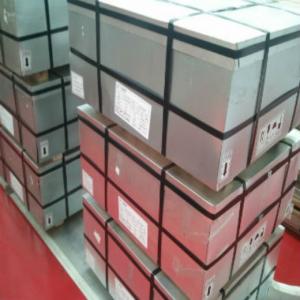Tinplate for Biscuits Cans Usage, MR/SPCC Material
- Loading Port:
- Tianjin
- Payment Terms:
- TT OR LC
- Min Order Qty:
- 50 m.t.
- Supply Capability:
- 40000 m.t./month
OKorder Service Pledge
OKorder Financial Service
You Might Also Like
Specification
1.Brief Introduction
Tinplate is widely used for making all types of containers, containing industrial usage such as paint can, oil can, aerosol cans etc., and food cans like milk powder cans, tomato paste can, dry food cans etc.
2. Quality
As a state owned company and a large tinplate supplier in China, our tinplate quality ranks 1st level in China, similar to Bao Steel, Posco etc.
3. Specification
standard: GB/T2520, JIS G3303, DIN EN10202
Material: MR /SPCC
Thickness available: 0.16-0.50MM
Width available: 600~1050MM
Temper grade: T1 – DR8
Tin coating: ordinary 2.8g/2.8g, 5.6g/5.6g and others
Package: sea worthy export package.
Applications: Tin can for chemicals & paint cans, industrial cans, food cans
4. Our production steps
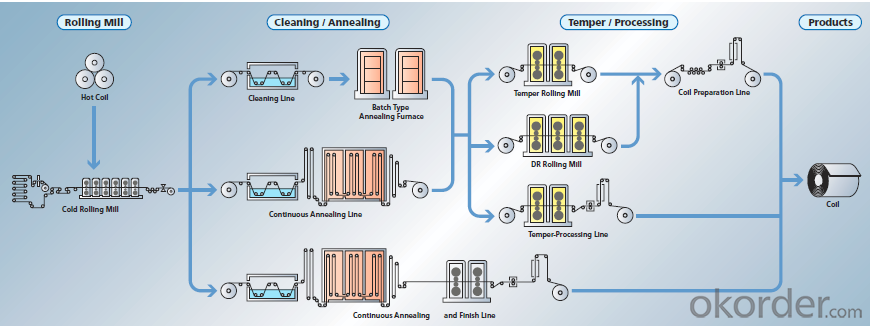
5. Usage Scope
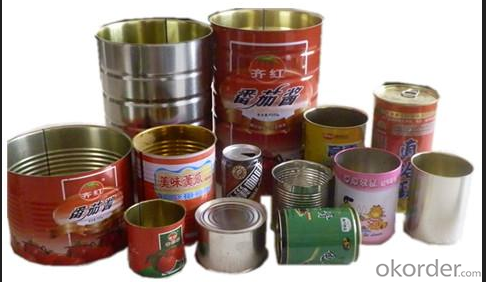
6. Our euxport market
our tinplate has been popularly exported to more than 30 countries, including Asia, Europe countries, Gulf area, Sounth America, Northe & South Afric etc.
7. FAQ
a. what’s your company name?
our company named CNBM international corporation, we are both one large state owned company and tinplate supplier in China
b. where your mill situated?
Our head office is in Beijing, while our mill in Hebei province.
c. how about the delivery time?
usually 55~65 days after receipt advance payment or original LC;
d. what payment term you accept?
Our payment term is very feasible, such as TT, DP, LC at sight, LC after sight etc.
e. can you offer MTC?
Of course, we will issue MTC after each shipment, for customer reference and testing if some quality issue appears.
- Q: What are the advantages of using tinplate for jewelry?
- One advantage of using tinplate for jewelry is its affordability. Tinplate is a cost-effective material compared to precious metals like gold or silver, making it more accessible for a wider range of customers. Additionally, tinplate is durable and resistant to rust or tarnish, ensuring that the jewelry will maintain its appearance over time. Its lightweight nature also makes it comfortable to wear, making tinplate jewelry a practical choice for everyday use.
- Q: What are the common thicknesses of tinplate?
- The common thicknesses of tinplate range from 0.13mm to 0.49mm, with some variations depending on specific industry requirements.
- Q: What are the main factors influencing the price of tinplate?
- There are several main factors that influence the price of tinplate. Firstly, the cost of raw materials such as tin and steel, which can fluctuate based on supply and demand dynamics, can have a significant impact on tinplate prices. Additionally, changes in labor costs, energy prices, and transportation expenses can also affect the overall price of tinplate. Furthermore, market conditions, including global economic trends, geopolitical factors, and trade policies, can influence the demand and pricing of tinplate. Lastly, technological advancements and innovations in tinplate manufacturing processes can impact production costs and subsequently affect the price of tinplate.
- Q: How does tinplate affect the recyclability of mixed-material packaging?
- Tinplate can have a positive impact on the recyclability of mixed-material packaging. Tinplate is highly recyclable and can be easily separated from other materials during the recycling process. This allows for efficient recycling of tinplate components in mixed-material packaging, contributing to overall sustainability efforts.
- Q: How does tinplate compare to other packaging materials in terms of sustainability?
- Tinplate is considered a highly sustainable packaging material compared to others. It is 100% recyclable without any loss in quality, making it an excellent choice for reducing waste. Additionally, tinplate has a long lifespan and offers excellent protection for products, reducing the need for additional packaging layers. It also requires less energy and resources to produce, further enhancing its sustainability credentials.
- Q: How does tinplate perform in terms of odor resistance?
- Tinplate generally demonstrates good odor resistance due to its non-reactive nature and protective tin coating, which helps prevent any unwanted odors from permeating the material or affecting the contents stored inside.
- Q: What are the advantages of using tinplate for stationery and office supplies?
- One advantage of using tinplate for stationery and office supplies is its durability. Tinplate is highly resistant to corrosion and is less likely to get damaged or dented, ensuring that the supplies made from it will last longer. Additionally, tinplate has a smooth surface, making it easy to clean and maintain. Another advantage is its aesthetic appeal. Tinplate can be easily customized and printed on, allowing for creative and visually appealing designs on stationery and office supplies. Lastly, tinplate is also eco-friendly as it is a recyclable material, contributing to a more sustainable approach in the production and use of these supplies.
- Q: Can tinplate be formed into complex shapes?
- Yes, tinplate can be formed into complex shapes through various manufacturing processes such as stamping, deep drawing, and bending.
- Q: What are the main advantages of using tinplate for electrical enclosures?
- The main advantages of using tinplate for electrical enclosures are its high corrosion resistance, excellent electrical conductivity, and cost-effectiveness. Tinplate provides a protective coating that prevents rust and corrosion, ensuring the longevity of the enclosure. Its conductivity allows for efficient electrical flow and minimizes power loss. Additionally, tinplate is relatively inexpensive compared to other materials, making it a cost-effective choice for manufacturing electrical enclosures.
- Q: What are the challenges in printing on tinplate?
- Some of the challenges in printing on tinplate include the difficulty in achieving accurate and precise color reproduction, the need for specialized inks and printing processes, and the potential for adhesion issues due to the smooth and non-porous surface of tinplate. Additionally, the durability of the printed image may be compromised due to scratching or rubbing, and the high cost of tinplate printing equipment and materials can also pose a challenge.
Send your message to us
Tinplate for Biscuits Cans Usage, MR/SPCC Material
- Loading Port:
- Tianjin
- Payment Terms:
- TT OR LC
- Min Order Qty:
- 50 m.t.
- Supply Capability:
- 40000 m.t./month
OKorder Service Pledge
OKorder Financial Service
Similar products
Hot products
Hot Searches
Related keywords
